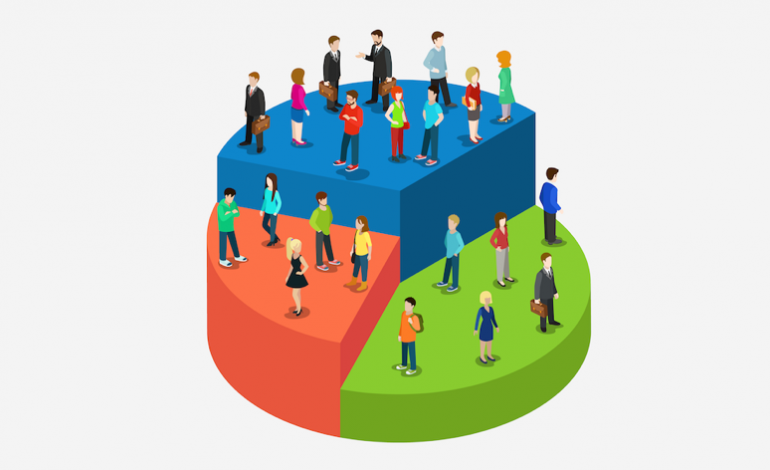Audience segmentation is a crucial strategy for event organizers aiming to enhance the attendee experience, improve marketing efficiency, and ultimately drive higher ticket sales.
In today’s world, where every city is filled with a diverse population and vibrant event scene, understanding and segmenting your audience can be the key to standing out in a competitive market.
Let’s take a look at audience segmentation for events, detailing what it is, why it matters, and how you can use it effectively to elevate your event strategy.
What is Audience Segmentation?
Audience segmentation is the process of dividing your audience into distinct groups based on specific characteristics, behaviors, or preferences. This approach allows you to create tailored marketing campaigns, personalize event experiences, and engage attendees in a way that resonates with their unique needs.

Key Segmentation Strategies for Events
Effective audience segmentation requires a thoughtful approach, combining data analysis with a deep understanding of your audience. Here are some key strategies to consider.
Demographic Segmentation
What It Is: Grouping attendees based on demographic factors such as age, gender, income, education, and occupation.
Why It Matters: Demographic information is often the easiest to collect and provides a foundational understanding of your audience. For example, an event targeting young professionals in Dubai will have a different tone, content, and marketing approach compared to an event aimed at retirees.
How to Use It: Use demographic data to personalize your event communication. For instance, you can create age-specific promotional content or offer discounts to students or senior citizens.
Psychographic Segmentation
What It Is: Dividing your audience based on interests, values, attitudes, and lifestyle.
Why It Matters: Psychographic segmentation goes beyond surface-level demographics, providing a deeper understanding of what motivates your audience. This is particularly valuable in Dubai, where diverse cultural and lifestyle preferences can significantly influence event attendance.
How to Use It: Use psychographic insights to craft messaging that resonates on an emotional level. For example, if a segment of your audience values sustainability, highlight your event’s eco-friendly initiatives.
Geographic Segmentation
What It Is: Segmenting your audience based on their physical location.
Why It Matters: Location-based segmentation helps you target local, regional, and international attendees differently. Each city’s event landscape often draws a mix of residents, regional visitors, and international tourists, each with unique needs and expectations.
How to Use It: Use geographic data to tailor your marketing and logistics. For example, offer transportation deals for international visitors or promote local attractions alongside your event to enhance the overall experience.
Behavioral Segmentation
What It Is: Grouping your audience based on their actions, such as past purchases, event attendance frequency, or engagement levels.
Why It Matters: Behavioral data offers actionable insights into what your audience does, enabling you to predict future actions and personalize your marketing efforts.
How to Use It: Leverage behavioral data to create targeted promotions. For instance, offer early-bird discounts to frequent attendees or exclusive perks to loyal customers.

Why is Audience Segmentation Important for Event Organizers?
Audience segmentation is not just a marketing buzzword; it is a powerful tool that offers several benefits to event organizers, especially in today’s diverse markets. Here’s why it should be at the core of your event strategy.
Enhanced Marketing Efficiency
Segmentation allows you to focus your marketing efforts on the right audience, reducing wastage and maximizing return on investment (ROI). By targeting the right segments, you can create campaigns that speak directly to the needs and interests of your attendees, driving higher ticket sales.
Personalized Attendee Experience
In today’s competitive event landscape, personalization is key. By understanding the preferences of different audience segments, you can tailor the event experience—from the content and format to the promotions and communications—ensuring a memorable and engaging experience for all attendees.
Better Engagement and Loyalty
When your audience feels understood and valued, they are more likely to engage with your brand and become repeat attendees. Segmentation helps you build deeper connections by delivering relevant content and experiences that foster loyalty.
Data-Driven Decision Making
Audience segmentation provides valuable insights into your attendees’ behavior, allowing you to make informed decisions. Whether it’s refining your marketing strategy, choosing the right event format, or determining the most effective communication channels, segmentation empowers you with the data you need.
Increased Sponsorship Opportunities
Sponsors are increasingly looking for events that can provide access to specific audience segments. By showcasing detailed audience insights, you can attract sponsors who align with your segments, opening up new revenue streams and partnership opportunities.
How to Collect and Segment Audience Data
Collecting and segmenting data effectively is essential for accurate audience segmentation. Here’s a step-by-step guide to getting started.
Collect Data from Multiple Sources
To create a well-rounded profile of your audience, it’s important to gather data from various touchpoints. Here’s how you can do it.
- Ticket Sales Platforms: Collect data directly from your ticket sales system like Platinumlist including purchase history, preferred event types, and ticket categories. This data can provide insights into purchasing behaviors and trends.
- Registration Forms: Design your registration forms to capture essential demographic and psychographic information. Include fields for age, location, interests, and other relevant details that help in segmentation.
- Social Media Interactions: Social media platforms like Instagram, Facebook, and LinkedIn offer valuable insights into your audience’s interests and engagement levels. Analyze comments, likes, shares, and audience demographics provided by social media analytics tools.
- Post-Event Surveys: Use surveys to collect feedback on your event. Ask questions about the attendee experience, interests, and suggestions for future events. This data can help you refine your segmentation strategy.
- Website Analytics: Utilize tools like Google Analytics to track website visitor behavior, including pages visited, time spent on pages, and referral sources. This can help you identify popular content and potential audience segments.
Use Analytics Tools for Deeper Insights
Analytics tools are essential for processing raw data into actionable insights. These tools help you identify patterns, trends, and correlations that can inform your segmentation strategy.
- Audience Analytics Platforms: Tools like Google Analytics, HubSpot, or Mixpanel provide in-depth insights into audience demographics, behavior, and engagement. These platforms help you segment audiences based on real-time data and track the effectiveness of your strategies.
- Machine Learning and AI: Advanced analytics tools powered by AI can analyze large datasets quickly, identify hidden patterns, and predict future behavior. For instance, AI can help you identify which audience segments are most likely to attend specific types of events.
- Heatmaps and Behavioral Tracking: Use tools like Hotjar to create heatmaps of your website. This visual representation of user behavior can show you which parts of your event pages are grabbing the most attention, helping you understand what appeals to different segments.

Segment and Test
Segmentation is not a one-time process; it requires constant testing and refining to ensure it meets your event’s goals. Here’s how to effectively segment and test.
- Create Detailed Segments: Start by defining your segments based on your event’s objectives. For example, create segments such as “First-Time Attendees,” “Frequent Visitors,” or “VIP Customers.”
- A/B Testing: Test different marketing approaches on each segment. For example, you can send personalized email campaigns to different audience segments and measure the open rates, click-through rates, and conversion rates.
- Monitor Engagement Metrics: Track the performance of each segment using metrics like ticket sales, email engagement, social media interactions, and on-site participation. This will help you determine which segments are responding positively to your strategies.
- Iterate Based on Feedback: Use feedback from your attendees to refine your segments. For example, if a particular segment is not engaging as expected, revisit their data to identify missing insights and adjust your strategy accordingly.
Personalize Communication and Experience
After segmenting your audience, the next step is to create personalized experiences that resonate with each group. Personalized communication fosters a sense of connection and relevance, making attendees feel valued.
- Tailor Messaging: Customize your marketing messages based on the preferences and needs of each segment. For example, send tailored emails with special offers or event highlights that are specifically relevant to each group.
- Segment-Specific Content: Create content that speaks directly to the interests of each segment. For instance, if you have a segment of tech enthusiasts, you can create blog posts, videos, or social media content that highlights the latest tech innovations at your event.
- Exclusive Offers: Offer exclusive perks, such as early access to tickets, VIP upgrades, or special discounts to specific segments. This approach helps build loyalty and encourages repeat attendance.
- Customized On-Site Experiences: Use segmented data to personalize the on-site experience, such as curated welcome kits, targeted seating arrangements, or personalized agendas based on attendee interests.
How Platinumlist Helps in Audience Segmentation
The process of audience segmentation is by no means simple, but what helps is having powerful systems like Platinumlist that can help event organizers segment and engage their audience effectively with the help of advanced tools. Here’s how Platinumlist can help.
- Comprehensive Data Collection: Our system collects data from multiple sources—ticket sales, registrations, surveys, and social media—to provide a complete view of your audience.
- Advanced Analytics and Reporting: Our robust analytics system provides detailed analytics and real-time reports on demographics, purchase patterns, and engagement, helping identify key audience segments.
- Custom Audience Segmentation: With Platinumlist, you can create custom segments based on preferences, behaviors, location, and more, enabling targeted marketing and personalized experiences.
- Personalized Communication Tools: Organizers can send tailored emails and messages to segmented audiences, increasing engagement through relevant offers and event updates.
- Retargeting and Upselling: Segment-based retargeting campaigns setup by our expert marketing team remind attendees of abandoned carts, upsell premium experiences, and drive conversions.
- Custom Post-Event Surveys: Our post-survey option helps create surveys for specific segments to gather feedback, refine future segmentation, and improve attendee experiences.
Audience segmentation is an invaluable tool for event organizers, enabling you to connect with your audience on a deeper level, improve marketing efficiency, and deliver personalized experiences. By leveraging data and insights, you can refine your event strategy, attract the right attendees, and create memorable events that keep people coming back.
At Platinumlist, we offer advanced tools and insights to help you understand and segment your audience effectively, giving you the competitive edge you need in the bustling event scene.
Whether you’re organizing a small local gathering or a large international event, the right segmentation strategy can make all the difference.
Get in touch with us today to find out more.



